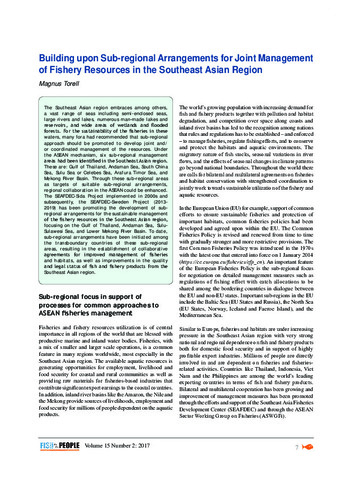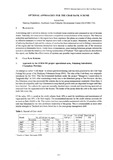| dc.description.abstract | The Southeast Asian region embraces among others, a vast range of seas including semi-enclosed seas, large rivers and lakes, numerous man-made lakes and reservoirs, and wide areas of wetlands and flooded forests. For the sustainability of the fisheries in these waters, many fora had recommended that sub-regional approach should be promoted to develop joint and/or coordinated management of the resources. Under the ASEAN mechanism, six sub-regional management areas had been identified in the Southeast Asian region. These are: Gulf of Thailand, Andaman Sea, South China Sea, Sulu Sea or Celebes Sea, Arafura Timor Sea, and Mekong River Basin. Through these sub-regional areas as targets of suitable sub-regional arrangements, regional collaboration in the ASEAN could be enhanced. The SEAFDEC-Sida Project implemented in 2000s and subsequently, the SEAFDEC-Sweden Project (2013-2019) has been promoting the development of sub regional arrangements for the sustainable management of the fishery resources in the Southeast Asian region, focusing on the Gulf of Thailand, Andaman Sea, SuluSulawesi Sea, and Lower Mekong River Basin. To date, sub-regional arrangements have been initiated among the transboundary countries of these sub-regional areas, resulting in the establishment of collaborative agreements for improved management of fisheries and habitats, as well as improvements in the quality and legal status of fish and fishery products from the Southeast Asian region. | en |




